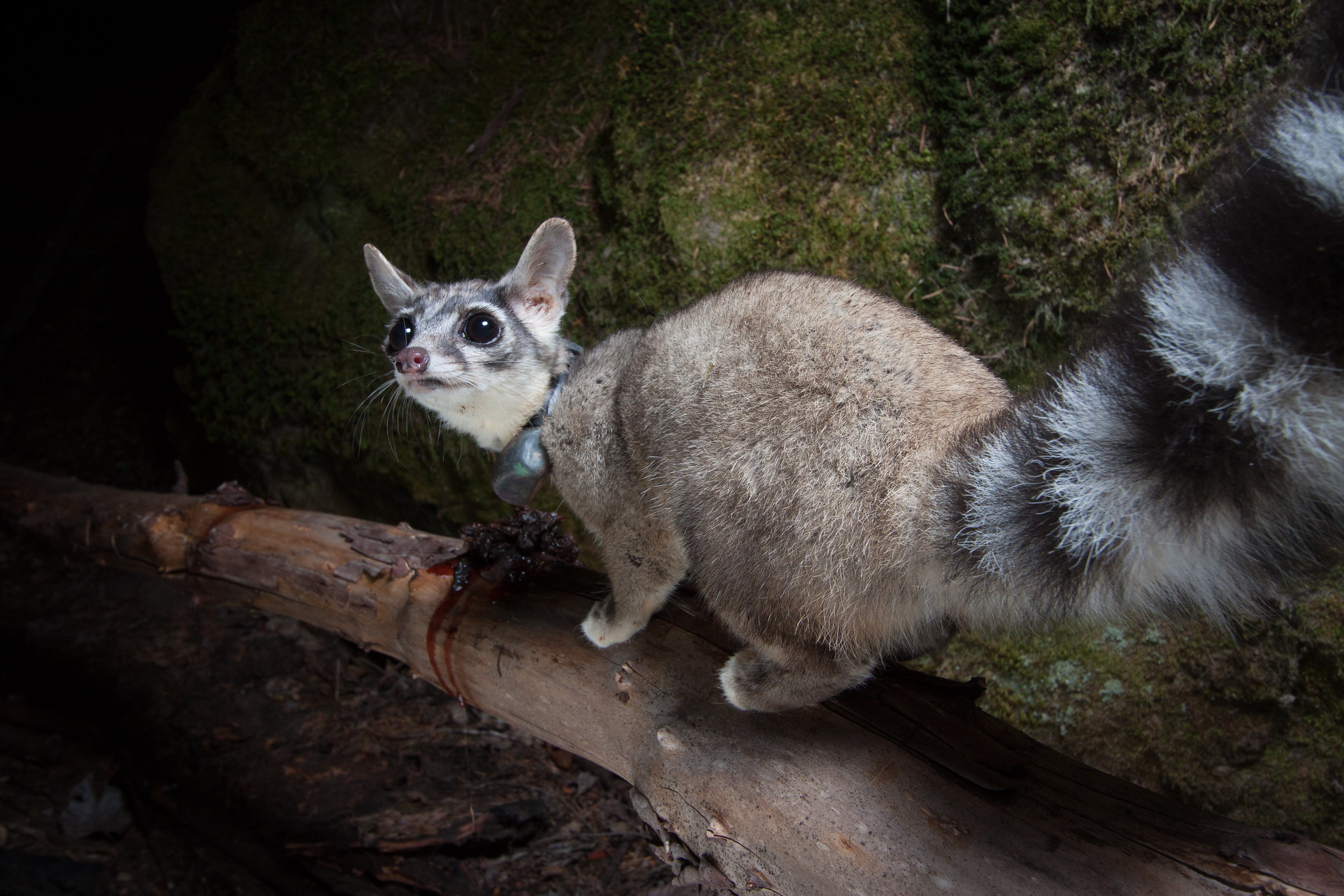
The ringtail is a big-eyed, bushy-tailed relative of the raccoon whose range extends from northern Mexico to Southern Oregon. It’s a reclusive species, but research from the Hoopa Valley Tribe and Oregon State University sheds new light on their habitat and behavior.
Jonathan Armstrong, Oregon State University
The ringtail is a big-eyed, bushy-tailed relative of the raccoon whose range extends from northern Mexico to Southern Oregon.
The squirrel-sized carnivores are active at night and spend the day resting in rock piles or hollowed-out trees.
Though wide-ranging, the animal’s nocturnal habits and reclusive nature make it something of a mystery to ecologists.
“We don’t know a lot about ringtails,” said Sean Matthews, a wildlife ecologist with Oregon State University’s Institute for Natural Resources. “We get a lot of traditional ecological knowledge from tribes that we work with, which is a huge source of information, and Western science is slowly catching up to that knowledge.”
Ringtails aren’t federally recognized as a threatened or endangered species, though Matthews said they’re listed as a “conservation concern” in Oregon and California.
Still, the species is culturally significant to many tribes in the Pacific Northwest.
“In Northern California and Southern Oregon, many tribal communities are really interested in ringtails because they are seen as a relative and also serve as a source of regalia material for dances and other ceremonies,” Matthews said.
A recent study from OSU and the Hoopa Valley Tribe aimed to better understand ringtail behavior and the type of habitat they prefer.
The study took place on the Hoopa Valley Reservation in Northern California with the goal of improving the tribe’s forest management practices.
“[Timber] is a pretty major economic driver for the reservation and for the tribe,” Matthews said. “They’re trying to balance … preserving these species of cultural concern while also maintaining this timber-based economy.”
Related: Once-vanished fishers are making their comeback in Washington
Researchers used radio collars to track ringtails back to the trees where they sleep during the day.
They found that ringtails preferred mature forests, where cavities have had more time to form in larger trees. However, ringtails on the Hoopa reservation also selected younger forests that had been logged within the last 10 to 20 years.
Matthews said that might have to do with the number of trees — both living and dead — that tribal forest managers choose to leave on the land.
“We were kind of surprised by this, but as we thought about it more, it really made sense,” he said. “Our suspicion is that there were enough older trees left on the landscape following a timber sale that ringtails were still able to make a living.”
Researchers also found that ringtails preferred hardwood tree species such as tanoaks, black oaks and white oaks.
While the species seems fairly adaptable, Matthews said more research is necessary to understand how ringtails respond to human forces such as forest management.
“We just need to be thoughtful,” he said. “I often use the adage, ‘How far can we bend it till it breaks,’ and know where that inflection point is?”
Matthews said he next hopes to focus on how ringtails interact with other species, such as fishers, and how different types of forests might influence those interactions.
Sean Matthews spoke with “Think Out Loud” host Dave Miller. Click play to listen to the full conversation:


